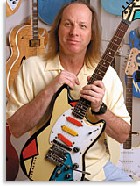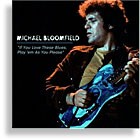.jpg)
In the late 1980s, the Pixies’ unique brand of punk, pop, and guitar rock almost singlehandedly created the alternative music movement that flourished in the early ’90s. Its sound served as the blueprint for a host of new artists including Nirvana, and was cited as a major influence on more established artists, including U2 and David Bowie.
When asked by Rolling Stone about the inspiration behind “Smells Like Teen Spirit,” Kurt Cobain said, “I was trying to write the ultimate pop song. I was basically trying to rip off The Pixies.”
The Pixies were formed in Boston in 1986 by guitarist/songwriter Charles Thompson and lead guitarist Joey Santiago, who recruited bassist Kim Deal and drummer David Lovering. Thompson then assumed the pseudonym “Black Francis” and the group assumed its name after flipping through a dictionary.
Francis’ often brilliant songwriting employed extraordinary dynamics – they practically invented that “soft verse/loud chorus” technique – and vivid imagery, and his guitar playing was tight and focused. Santiago’s inventive and unconventional melodies were refreshing amongst the slew of hair metal players of the day, making him a sort of “anti-hero” guitar hero.
After quickly gaining a cult following on the local level, the Pixies were signed to 4AD Records and released the EP Come On Pilgrim, in 1987. The following year, the Pixies released their first full-length album, Surfer Rosa, produced by Steve Albini. The album’s international success caught the attention of Elektra Records, who later went on to release their three biggest selling albums.
In 1992, after the group released the hard-rocking Trompe Le Monde and opened for U2 on its 1992 Zoo TV Tour, the Pixies broke up. During this period, bassist Kim Deal worked with the Breeders, and Black Francis worked under Black’s other assumed name Frank Black, and Joey formed The Martinis with his wife, Linda Mallari. Drummer Dave Lovering went on to join Cracker, then spent time working as a magician, opening for several rock tours (including Black’s).
As with all good rock and roll breakups, reunions seem inevitable, and in April of 2004, the Pixies got together for the first time in more than a decade for a critically acclaimed world tour.
VG recently caught up with Francis and Santiago, both of whom are big fans of vintage instruments.
Vintage Guitar: Your reunion tour has you playing together for the first time in more than 10 years. How does it feel?
Black Francis: It feels like it did before, basically. No lie. There’s a lot of muscle memory involved in playing music, and when you go back to old songs, it looms larger than poignant thoughts. It’s a more gut-level thing.
Joey Santiago: It felt good. The anticipation was exciting, and when the actual playing was happening, I felt pretty much like “Just don’t f*** up!” (laughs).
Your guitar styles are very different, yet work well together. When developing a song, do you consciously plan parts, or do you sort of weave them together?
BF: I hate to dumb it down too much, but basically I’m the guy who just shows up with the chord progressions. So, obviously, I’m going to play the chords, many times chunky, as they typically are in rock music. And Joey is the “lead” player, so he’s gonna play higher and more single-note stuff. Sometimes he does a solo, sometimes a repeated riff, a motif. So we start from a sort of Joe Blow place… I’m the rhythm guitar player “chugga chugga chugga” and he’s the lead player “reeneeneeneenee.” You can reduce it all to that. That’s not to say that we play in a conventional way, although sometimes we play a combination of really conventional stuff and oddball stuff. That’s probably true about the Pixies in general. It sounds kinda normal, but there are subtle oddities going on (laughs). Joey is the unsung hero of the Pixies… maybe not now, but in the earlier days, a lot of magazines were personality-driven and wanted to talk about the grouchy lead singer or the drunk bass player, and what’s going on between those two… so the guitar player got left on the back burner.
I think there are several things that Joey does, though, that have made his style stand out. He’ll play something that’s seemingly very simple, and his whole subtle touch just sort of makes it sound classy and makes it pop out.
JS: Back in the old days, I’d just record Charles on his acoustic, or the practices with a cassette tape, remember those things (laughs). Then I’d take it home and practice, and come up with my stuff.
How has your songwriting changed since you started?
BF: When I started out, I was very much into abstraction and very short songs, and a certain type of surreal thing in my songs. If I’ve changed one thing, I’ve tried to adopt more styles into my songwriting, like doing some classic things like love songs or singer/songwriter kind of stuff, trying to expand. When you’re young, you tend to try to be a more avant-garde type of guy, and when you do it long enough, you want to go where others have gone before, and hold your own. You’re not as embarrassed to embrace formulaic or highly stylized things. When you’re young you’re trying to avoid horrible clichés and mediocre music, so the last thing you want to say is “Hey, let’s do a country and western song”…you’re all about breaking everything up. You do things for awhile, and you’re less conscious of people thinking you’re dorky. I think you learn respect for some of the forms of music that will live on.
The first Pixies stuff represents my earliest songwriting, and as they say, you have your whole life to write your first album, and six months to write your second, so the first two Pixies records represent a lot of the writing that started when I was a teenager.
How has your technique changed since you began playing guitar?
BF: I probably have changed, but can’t properly analyze how. Initially, I learned so much on the guitar, and then just didn’t try too hard to break out of that, so I’ve just learned little things through time, like new fingerings. Especially from watching people who have original styles. You work hard at things like songwriting or rehearsing for a tour, but really don’t put the effort into the learning curve… I just try to let that happen on its own – that’s how you develop your own style.
JS: Mine hasn’t (laughs)… I’m trying to change it, but I can’t! Technique-wise, I hope I’m a little better now. But Charles has a style of his own, too… his rhythm playing is to die for – it’s really, really good.
When did you start playing?
JS: I started playing in junior high, and never really took it that seriously. But then, around high school, I started getting more interested in it. I used to plug my electric guitar in at parties and we’d all get s***faced (laughs).
To many, your music was unlike anything that came before it, and doesn’t sound derivative of earlier genres. What type of music did you listen to as a kid?
BF: I would say Neil Young’s Decade album was a huge influence on me. That was probably the first record I heard as a teenager that made me think about the artist, it got me into a lot of different types of material and it gave me a good sense of him. Before Neil, I would say that I was big into Bob Dylan and The Beatles when I was really young, and Donovan. I was a huge Leon Russell fan, and still listen to him. I also used to listen to a lot of ’60s stuff when I was a teenager. I wasn’t really into the current stuff or the punk stuff that was going on in the ’70s. In the ’60s, there were these “rock family trees” and I used to work my way through them. I listened to Jimi Hendrix, The Doors, John Mayall’s Bluesbreakers, The Yardbirds, and a Christian rock guy named Larry Norman, whose heyday was the early ’70s; a folky guy who was too rock and roll for religious people and too religious for rock and roll people.
JS: I was into the usual suspects – Hendrix and all that. I really liked the Beatles, too.
Do you remember your first good instrument and amp?
BF: I had an EMC amp that worked okay, and played a Guild acoustic electric through it, which I started playing in high school. That was my first setup with The Pixies, and I played it for a lot of the early Pixies gigs. The amp didn’t make it too far, though. It stopped working, so we got a butter knife to open it up and see if we could fix it (laughs). And of course, we couldn’t! So the EMC was not revived (laughs). Then we both got into Peavey amplifiers, which worked for him.
JS: The first good instrument I had, my mother bought for me, just after junior high. It was an Ovation Viper. Remember those? It was a good guitar, too. It had the full 24 frets, and was made for someone with tiny hands, so it would sit in my hands every night, and I liked it. I tried a more expensive Les Paul and it didn’t fit as well for my hands. For an amp, I got a Peavey Special.
I got my first Les Paul when we formed the band in Boston. I actually initially wanted to be the Tele guy, but Charles already had one, so not to be redundant, I went with the humbuckers, something totally opposite of what he was playing.
I believe it was Brian Eno who said “Only about a thousand people ever bought a Velvet Underground album, but every one of them formed a rock and roll band.” Something similar could be said for the Pixies, whose impact perhaps belies its popularity. What was it about your music that attracted fans?
BF: Oh, I don’t know. I suppose enough people found what they wanted to find in it. In other words, people were looking for something that was kind of pop or aggressive were able to find it in the music. Other people who were looking to find something humorous and not taking themselves too serious, even a bit nerdy, were able to find that, as well. Some wanted music that was sort of quirky, arty – dare I say avant-garde – and were able to find it in our music. Different types of people were able to focus on different elements.
JS: I’d say that it was unique at the time. I don’t mean to sound like an old fart, but that was when “alternative” was actually alternative. We didn’t consciously rebel against the norm; I think it was just a natural thing for us to be alternative. This was in the days of hair metal. I remember going through Electra Records offices, and looking at their posters on their wall, and thinking “They’ll really like us…”
Obviously, Kurt Cobain was greatly influenced by the Pixies.
BF: It’s unfortunate for Nirvana that they got so hot so fast. That’s exactly the sort of thing that makes me not want to listen to a band or makes me not want to see a movie. So there’s stuff I’ve missed over the years, because if it’s like “Everybody’s going to see that movie,” guess what I’m not going to see? I tend to have a problem with things that become that popular.
So you consider yourself a contrarian?
BF: Yeah, that’s a good way to describe it. I mean, I hear Nirvana at places like the grocery store now, and they were good and they were talented and all that, but it’s hard to talk about something that’s so huge for so many people. I hesitate to really analyze their music.
The Pixies have used Marshall amps for years. When did you first get into them?
BF: We were opening for Soul Asylum at the original Blue Note nightclub in St. Louis, and they had some that sounded really good. So when we got home, we went down to the music store and bought brand new Marshalls, and have used them ever since.
JS: Yes, from that point on we’ve used Marshalls. Mine is a 50-watt JCM 800. I always liked them, but since we had to lug our own gear around, I was like “What? Are you crazy, I’m not gonna lug that big thing around.” So I stuck with the Peavey until we had some help (laughs). I really like the JCM 800s, but don’t like the 900s. For the studio, I have a blackface Fender Vibrolux reverb.
BF: When we got bigger, we went with two Marshalls each. I do have some old Vox AC30s that I used in my solo band, but went back to Marshalls when we got back together.
Do you collect guitars?
BF: For a while, I was really into ’60s Teles, and then a few years back, a bunch of them got stolen. So to sort of “celebrate,” I went out and bought my first ’50s Tele – a ’57 – which initially felt weird, but eventually became my main guitar up until last year, when my brother showed up at a gig in L.A. at the beginning of the Pixies tour with a ’53 Telecaster. He just gave it to me at the gig, and it sounded, actually, too intense. But eventually I started playing it, and now it’s my main guitar.
As far as other guitars, in the early days I played a bunch of these ’80s Japanese-made Fender Tele Specials. We had a well-known guitar tech named Toru, who stripped them, took them back to Japan, and dried them in some barbeque thing, which made them lighter. He then put vintage-style pickups in them, kept the whammy bridge on them, and cut some old-style saddles.
For the reunion, I could go back to Marshall amps, but not back to the ’80s Teles. Nowadays, I play just the ’53 Tele, and if I break a string, I’ll pickup my ’57.
JS: I like Les Pauls because they’re the easiest guitars (to play). I have a bunch of them, and my favorites include a black Custom that sounds like your run-of-the-mill Les Paul, and then a nice old goldtop that sounds super, super crisp. I just bought a ’52 Guild Aristocrat with soapbars. It’s a very nice guitar that I am dying to record with. It’s less forgiving than a Les Paul, though.
One of our crew, Myles Mangino, had a great super-light Gibson Melody Maker that I loved and wanted to buy, but he just traded it for a drum set. I was like, “Why didn’t you tell me?” I’ve also got a ’65 ES-345 with a Gibson vibrato, that’s a really nice guitar, too. I do prefer vintage guitars; they feel more worn-in, and if it has lasted that long, it must be worth the money (laughs). I’d like a ’50s Les Paul, though.
Joey, on Surfer Rosa, you had some amazing clean tones. What did you use on that record?
JS: I was playing a Fender Twin Reverb on that that Charles used to own. In the studio, I plug straight into the amps.
How about live? Are you using any effects?
JS: Live, I do use pedals, including a ZVex Super Hard-On, a DOD wah, Boss Fuzz pedal, a tremolo pedal, and an Electro-Harmonix Memory Man, which I love, and an SMF Mr. Echo, which is also a fun pedal.
Your style alternated from an almost updated surf rock to extreme hard rock, as on your final studio album, Trompe Le Monde, in ’91. Was there a conscious move to a heavier sound?
BF: We did listen to a lot of surf music, and we did play loud, but you just kind of make up a bunch of songs, and they come out like they come out. We’re not real visionary in that sense. We don’t have a game plan.
JS: I’ll play something a bit heavier if the song is harder-sounding. When I did those hammer-ons on that album, they were sort of a joke – a metal joke – everyone was just laughing when I was recording that.
Are there plans for the Pixies to record a new album?
BF: We don’t have any; we’re sort of hesitant on that. I think we’d like to, but I don’t think that’s what people are interested in right now. Maybe some of our

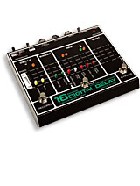
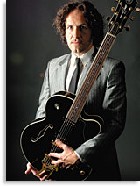
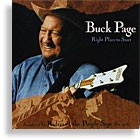
.jpg)

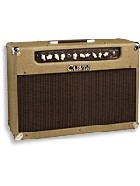
.jpg)
